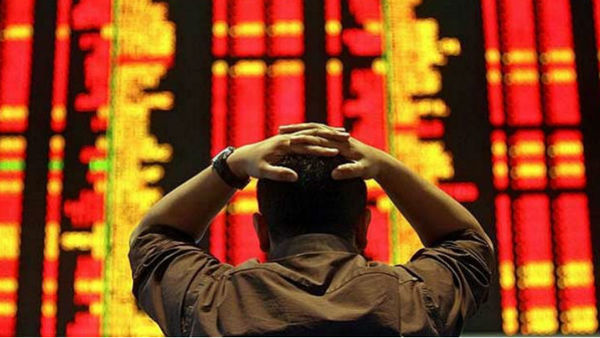 Here's why the stock market did what it did.
Here's why the stock market did what it did.(Bloomberg Opinion) –A few weeks ago, we discussed retrospective prescience — why everyone is so amazingly good at explaining what just happened. Apparently unaware of our own hindsight bias, we spin comforting narratives to help us understand recent events, despite having no knowledge of how things would unfold in advance.
My explanation for the stock-market correction is at risk for these same behavioral errors.
Nevertheless, with that in mind, here are five plausible reasons why markets have given up most or all of their gains for the year:
No. 1. Remember 2017: The gains of last year were very unusual. Not only were the double-digit increases much stronger than the median returns over time, they came about with almost no volatility. My best guess is that a market that leaves 2018 with little or no gain simply represents mean reversion at work.
And, that's a great deal! Imagine the God of Trading came to you and promised 20 percent gains in year one, followed by no gains in year two. You would take that offer in a heartbeat.
No. 2. High volatility follows low volatility: Similarly, the low volatility of 2017 was teeing up the higher volatility once the calm had run its course. As economist Hyman Minsky argued in his essential book “Stabilizing an Unstable Economy,” booms and busts are the natural tendency of complex, capitalist economies. Said differently, stability inevitably begets instability. We have no idea about the timing, but the move from low volatility to lots of volatility is a cyclical phenomenon we have seen time and time again.
No. 3. Extreme optimism: Record profits, tax cuts, deregulation, low interest rates, low unemployment — it's all so great. When stock prices are at record highs and the crowd is enthusiastic, Mr. Market will do what he can to humiliate investors. As legendary investor Bernard Baruch said, “The main purpose of the stock market is to make fools of as many men as possible.”
Markets demand humility — the acceptance of how little we actually know about the present, and an admission that we know nothing about the future. When the U.S. president is tweeting about all-time highs for markets, rest assured there is very little humility in the marketplace (that's my hindsight bias).
No. 4. The era of cheap money is ending: The post-crisis period of zero interest-rate policy ended in 2015. The Federal Reserve has been quite transparent in telling markets that higher rates were coming as policy makers shifted from their post-financial-crisis emergency footing. How fast rates rise would be a function of the economic data — including President Trump's tariffs and trade war, which are fundamentally inflationary. As we discussed last week, filling the Fed with inflation hawks guaranteed that rates would rise somewhat faster than they might have otherwise.
No. 5. The global economy is slowing: Lastly, growth in most of the world's major economies is losing a little bit of steam. This doesn't mean a recession is imminent or that a catastrophe is on the horizon. But it does mean that much of the sugar high we have been experiencing thanks to things like tax cuts, record corporate profits and huge share buybacks are already reflected in stock prices. The market isn't perfectly efficient — I am fond of saying it's kinda, eventually, sorta, mostly efficient — but it gets the really big issues more or less right over time.
With all of those factors already incorporated into share prices, what is going to drive the next move up in markets? I have no idea, but candidates include further economic expansion, more deregulation, another tax cut, increasing innovation, more buybacks, higher dividends and rising profits. But what if none of those materialize?
Baruch also famously said, “I made my money by selling too soon.” Most of us are not Baruch, in which case it is probably too late to sell and too early to buy. Unless you have done nothing amid all the noise and commotion, in which case you will end up ahead of almost everyone else in the long term.
Barry Ritholtz is a Bloomberg Opinion columnist. He founded Ritholtz Wealth Management and was chief executive and director of equity research at FusionIQ, a quantitative research firm. He is the author of “Bailout Nation.”
© 2025 ALM Global, LLC, All Rights Reserved. Request academic re-use from www.copyright.com. All other uses, submit a request to asset-and-logo-licensing@alm.com. For more information visit Asset & Logo Licensing.







